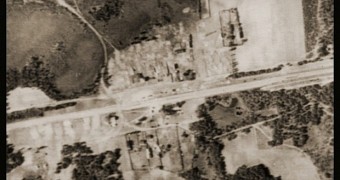Earlier this month, archaeologists announced to the world that several gas chambers had been unearthed at the site of a former Nazi death camp located in eastern Poland.
The extermination camp, named Sobibór, was destroyed by the Nazis themselves back in 1943, following a prisoners' uprising. Not long after, an asphalt road was built over it.
Archaeologists started excavating the site about 8 years ago. They have since discovered thousands of human bones, personal belongings of the people who died here, and even human ash.
Excavating a Nazi death camp
According to Israeli archaeologists Yoram Haimi, this extermination camp was set up by the Nazis in the woods of German-occupied eastern Poland. Seeing how this camp was demolished decades ago, researchers are having trouble making heads or Tails of its makeup.
Last year, in January, archaeologists announced the discovery of an escape tunnel at this site. At that time, Yoram Haimi described the camp's remains as great big pile of objects and prisoner remains. “It's a mess containing human bones, human ash, glass, pieces of metal and a lot of waste,” he said.
As messy as this archaeological site is, it appears that the gas chambers, which are all nestled inside a fairly big building, are surprisingly well preserved. Thus, despite the Nazi's efforts to destroy all evidence that this camp even existed, their walls are in very good condition.
“Finally, we have reached our goal – the discovery of the gas chambers. We were amazed at the size of the building and the well-preserved condition of the chamber walls,” Yoram Haimi said in a statement.
“The most poignant moment was when we found a wedding band next to the gas chambers, on which was the Hebrew inscription: ‘Behold, you are consecrated unto me,’” the archaeologist went on to detail, as cited by Live Science.
It is understood that, apart from these chambers, researchers exploring the site found a water well that the Nazis filled with waste when they rushed to demolish this extermination camp. Pendants, earrings, jewelry, perfume bottles and medicine cases that used to belong to the people killed here were also recovered.
Why explore this site?
The Holocaust might have happened decades ago, but this does not mean that researchers are done making heads or tails of this horrific period in history. On the contrary, it is still unclear exactly how many people were killed, and how the Nazis ran their extermination camps.
The excavation work at Sobibór is expected to lead to a better understanding of what the Nazis' killing agenda boiled down to. As explained by Yoram Haimi, “We will now be able to know more precisely what the process of murder was in the camp, and what the Jews went through until they were murdered."
Furthermore, “Additionally, finding the gas chambers and their capacity will enable us to estimate more precisely the number of people murdered in Sobibór.”
According to historical documents, this extermination camp was operational between 1942 and 1943. During this time, about 167,000 to 250,000 people were killed here.
Most of them were sent to the gas chambers shortly upon arrival. Some were not immediately murdered, but instead made to help keep the camp up and running by disposing of bodies.

 14 DAY TRIAL //
14 DAY TRIAL //